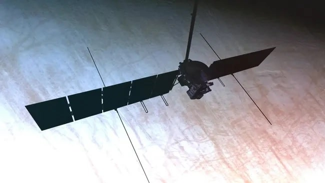The Europa Clipper spacecraft has powered up its initial scientific instruments.

As soon as the spacecraft reaches Jupiter, a magnetometer will be necessary to measure the magnetic field around Europa. This will help scientists confirm the existence of an ocean believed to be located beneath the moon's icy crust and assess its depth and salinity.
The radar instrument consists of four high-frequency antennas that extend crosswise from the solar panels, each measuring 17.6 meters, along with eight rectangular ultra-high frequency antennas, each 2.76 meters long.
Engineers will continue to test the Europa Clipper equipment, and it is expected that seven additional scientific instruments will be activated during a series of tests planned for the next two months.
The flight to Europa will take the spacecraft five and a half years, during which the probe will perform two gravity assists to gain speed: near Mars in February 2025 and near Earth in December 2026. These maneuvers will set it on a trajectory to enter its initial orbit around Jupiter in April 2030.
Upon arrival at the largest planet in the Solar System, Europa Clipper will conduct a series of additional maneuvers to position itself in its operational orbit. By early 2031, the probe will begin its main scientific program and conduct 49 close flybys of Europa.